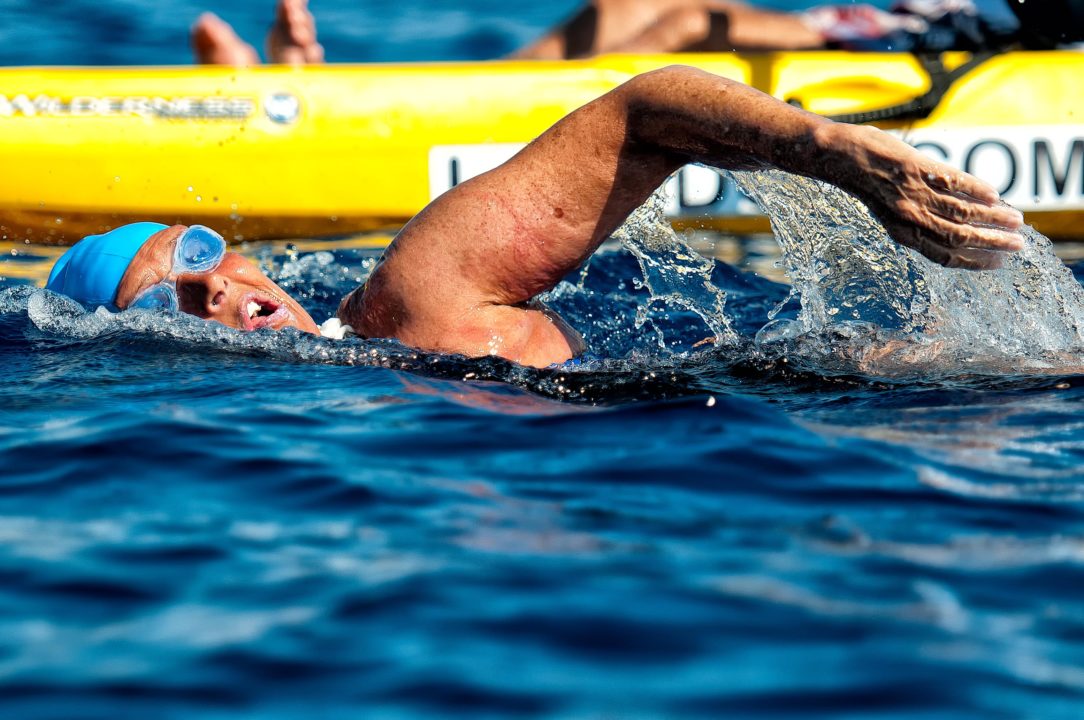The Marathon Swimmers Federation, a group based out of San Francisco, California, has established a universal set of “Rules of Marathon Swimming” by which it will consider swims for world records, official completions, etc.
The Marathon Swimmers Federation has no official standing in the world of sport – by its own admission, it is centered around an online forum with 830 members – but its membership and leadership does give it a large voice and some anecdotal authority within the broader community. Its leadership includes Evan Morrison, Andrew Malinak, Donal Buckley, and Elaine Howley, who are all fairly prominent figures in the marathon swimming world.
The group is framing these rules as a guideline for swims for which there is no local governing body to make its own rules, and are also encouraging them as a standard that local governing bodies can adapt.
The rules include things like proclaiming wetsuits as sufficient to label a swim as “assisted,” as would music players or metronomes that could be used as auditory pacing aids.
Though it is not specifically mentioned, the line between this new proclamation and the Cuba-to-Florida swim of Diana Nyad is unavoidably implied. The Marathon Swimmers Federation’s online forum was ground-zero for the questioning of the validity of Nyad’s swim as ‘unassisted’ and many of the group’s concerns over her historic swim are addressed in the new rules.
Aside from the wrote specifics of the rules, the tone of the new rules are laid out fairly clearly in a section labeled “The Spirit of Marathon Swimming.” The group wishes to maintain the historical integrity of the records of their sport, and a certain attitude of “crossing large bodies of water unaided is impressive because its hard and because it takes a certain kind of crazy to accomplish it.’
While it would be easy to write off these rules as a vocal, but small, portion of the open water swimming community attempting to impose their will on the greater community as a whole, these new rules could have a broad impact. For starters, it is a first attempt at standardizing the rules across the world of marathon swimming, though there will be push-back from those who believe that rules should not be standardized when these courses are non-standard. In other words, crossing the English Channel is not the same swim as crossing from Cuba to Florida, and rules should not treat them as such.
Beyond that, however, when organizations like the Guinness Book of World Records are seeking input from ‘the community’ about what are the considered standards for a World Record attempt, they look toward formalized, standardized rules in many cases, and this new set of rules could be a place for them to start.
At any rate, be these rules accepted or rejected by the larger community, they are a first step, and not an insignificant step in the ongoing debate over what really makes a marathon swim.
The full press release is below, unedited save for correction one minor typo that did not affect the meaning of the words.
SAN FRANCISCO, Calif.—The Marathon Swimmers Federation, a global organization uniting, inspiring, and connecting marathon and aspiring marathon swimmers around the world, has released a set of standardized rules and principles to govern the sport of marathon swimming. These rules, which are available in full online at http://www.marathonswimmers.
The rules were written by a core group of Federation members—Evan Morrison of San Francisco, Calif., Andrew Malinak of Seattle, Wash., Donal Buckley of Co. Tipperary, Ireland, and Elaine Howley of Boston, Mass. The co-authors spent several months developing the rules and sought input, comments, and peer-review from a wider, global group of dedicated open water swimmers. The peer review group is named in the rules document.
The rules document is intended to assist aspiring and experienced marathonswimmers, observers, event organizers, and the media to swim, organize, monitor, evaluate, and report swims according to guidelines long used by the global marathon swimming community. These rules do not supplant any existing marathon organization’s rules but may be used as a foundation for organizing bodies that want to develop swim-specific guidelines. The document includes standard marathon swimming definitions, a listing of accepted equipment, types of marathon swims, observation criteria, and standardized swimming rules.
Marathon swimming is unassisted by definition. Swims that use equipment or rules other than those outlined within the MSF rules document may be considered assisted swims.
The aim of the document is to present a complete picture of the guiding principles and widely agreed-upon standards of the sport of marathonswimming. As the sport grows in popularity, codifying rules becomes increasingly important. The co-authors hope that with the addition of these standardized rules, the sport can become more accessible to new swimmers.

Can anyone explain to me why the Marathon Swimming Foundation is opposed to music players, metronomes and wristwatches?
If the traditions and spirit of marathon swimming are the guide, and the MSF wants today’s marathon swimmers to be able to compare their achievements to the swimmers of 1875, they should require them to wear the long-sleeved, long-legged wool suits of the period.